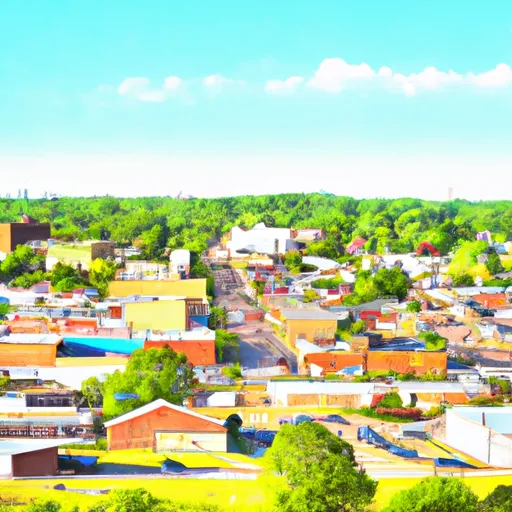-
 Snoflo Premium
Snoflo Premium
Get unlimited access to all our content
With no Ad interruptions! - Start Your Free Trial Login with existing account
Dierks
Eden Index
Climate
7.7
•
Recreation
5.9
•
Community
1.4
•
Safeguard
5.5/10

Dierks, Arkansas, has a humid subtropical climate with hot summers and cool winters. The city is located near the Little Missouri River, which supplies water to the nearby lake. Hydrology constituents of the lake include blue-green algae, which can cause harmful algal blooms. Outdoor recreation opportunities in the area include fishing, boating, and camping at Dierks Lake, as well as hunting in the surrounding forests. The nearby Ouachita National Forest offers hiking and wildlife watching opportunities. Overall, Dierks provides an excellent opportunity for those who enjoy outdoor activities and nature.
What is the Eden Index?
The Snoflo Eden Index serves as a comprehensive rating system for regions, evaluating their desirability through a holistic assessment of climate health, outdoor recreation opportunities, and natural disaster risk, acknowledging the profound impact of these factors on livability and well-being.
Climate Health Indicator (CHI): 7.7
Dierks receives approximately
1378mm of rain per year,
with humidity levels near 84%
and air temperatures averaging around
17°C.
Dierks has a plant hardyness factor of
8, meaning
plants and agriculture in this region tend to thrive here all year round.
By considering the ideal temperature range, reliable water supplies, clean air, and stable seasonal rain or snowpacks, the Climate Health Indicator (CHI) underscores the significance of a healthy climate as the foundation for quality living.
A healthy climate is paramount for ensuring a high quality of life and livability in a region, fostering both physical well-being and environmental harmony. This can be characterized by ideal temperatures, reliable access to water supplies, clean air, and consistent seasonal rain or snowpacks.
Weather Forecast
Streamflow Conditions
Red-Little
Area Rivers
Red-Little
Snowpack Depths
Red-Little
Reservoir Storage Capacity
Red-Little
Groundwater Levels
Recreational Opportunity Index (ROI): 5.9
The Recreational Opportunity Index (ROI) recognizes the value of outdoor recreational options, such as parks, hiking trails, camping sites, and fishing spots, while acknowledging that climate plays a pivotal role in ensuring the comfort and consistency of these experiences.
Access to outdoor recreational opportunities, encompassing activities such as parks, hiking, camping, and fishing, is crucial for overall well-being, and the climate plays a pivotal role in enabling and enhancing these experiences, ensuring that individuals can engage in nature-based activities comfortably and consistently.
Camping Areas
| Campground | Campsites | Reservations | Toilets | Showers | Elevation |
|---|---|---|---|---|---|
| Twin Dikes - Sam Rayburn Reservior | 45 | 198 ft | |||
| Boles Field | 20 | 308 ft | |||
| Ragtown | 25 | 208 ft | |||
| Mission Dolores City RV Park | 32 | 345 ft | |||
| Ebenezer - Sam Rayburn Reservoir | 30 | 192 ft | |||
| Mill Creek - Sam Rayburn Reservoir | 110 | 181 ft | |||
| Rayburn - Sam Rayburn Reservoir | 70 | 183 ft | |||
| San Augustine - Sam Rayburn Reservoir | 100 | 194 ft | |||
| Red Hills Lake | 26 | 374 ft | |||
| Sandy Creek | 15 | 161 ft |
Nearby Ski Areas
Catastrophe Safeguard Index (CSI):
The Catastrophe Safeguard Index (CSI) recognizes that natural disaster risk, encompassing floods, fires, hurricanes, and tornadoes, can drastically affect safety and the overall appeal of an area.
The level of natural disaster risk in a region significantly affects safety and the overall livability, with climate change amplifying these risks by potentially increasing the frequency and intensity of events like floods, fires, hurricanes, and tornadoes, thereby posing substantial challenges to community resilience and well-being.
Community Resilience Indicator (CRI): 1.4
The Community Resilience Indicator (CRI) recognizes that education, healthcare, and socioeconomics are crucial to the well-being of a region. The CRI acknowledges the profound impact of these elements on residents' overall quality of life. By evaluating educational resources, healthcare accessibility, and economic inclusivity, the index captures the essential aspects that contribute to a thriving community, fostering resident satisfaction, equity, and social cohesion.

